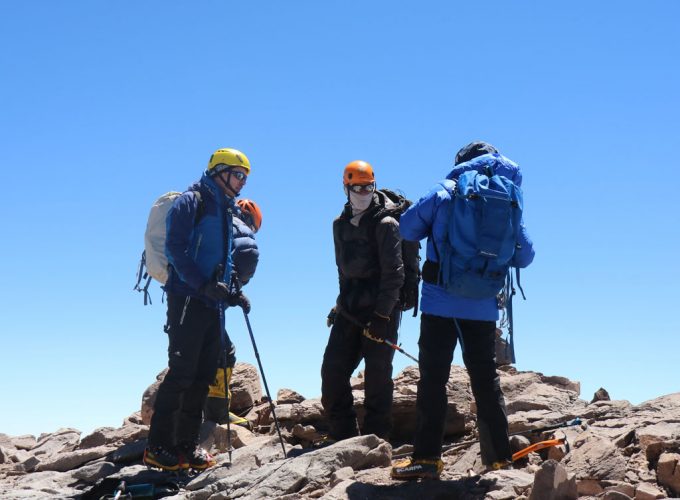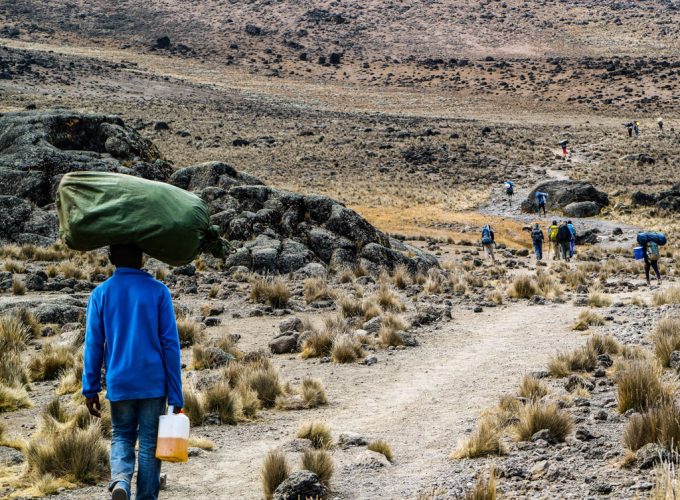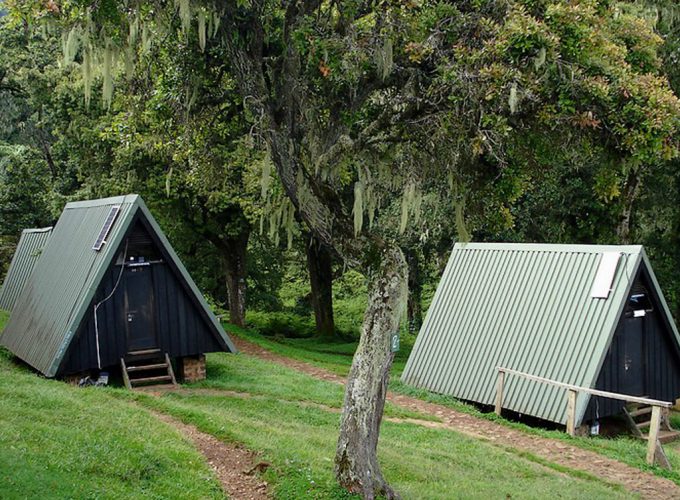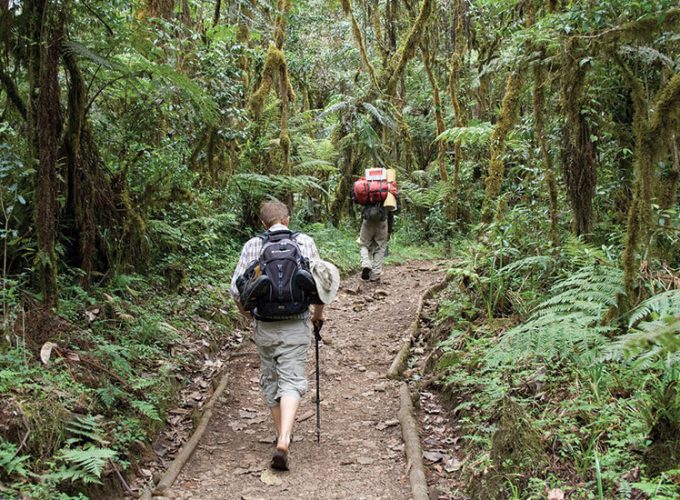Summit the highest peak of Africa, Kilimanjaro National Park
Mount Kilimanjaro has lured thousands of people young and old, from far and wide to reach its summit since the first recorded ascent by Hans Meyer, Ludwig Purtscheller, and a local guide called Lauwo in 1889.
There are 6 routes to the top of Mount Kilimanjaro, with some routes partially overlapping the final stages and the Mweka route only used for the descent. Most people take between 6 and 8 days to reach the summit and come back down again, depending on route choice and fitness level.
The most popular routes are the Marangu, Rongai Route, and the Machame route. The Marangu Route is the only one that offers the option of sleeping in huts every night. The Machame route is considered one of the most scenics and has a good acclimatization profile.
The Machame is presently the most popular route despite its higher degree of difficulty, so you can expect to not be the only one climbing.
Guides are compulsory and porters are available to turn this trek into a less arduous journey, even carrying portable toilets on the more luxurious tours. You do not need crampons and oxygen. However, falls, rock slides and altitude sickness can be fatal and should be considered seriously. Take as long as possible to make your ascent and use the advice of your guide and go ‘pole pole’, meaning slowly in Swahili.
The Kikuletwa hot springs after your hike to the top of Kilimanjaro
Post climb you can soak your weary legs in the hot spring pools at Kikuletwa. Surrounded by large fig trees, it is a true natural oasis.
Cultural visits near Kilimanjaro
The Chagga people traditionally live in the foothills of Kilimanjaro. If you are interested to find out more about this local tribe you can visit the Chagga Live Museum and the nearby Chagga caves.
Relax at Lake Chala
You can relax after your hike to the top of Kilimanjaro National Park by taking a dip in Lake Chala, a crater lake on the south-eastern side of Kilimanjaro national park. Or experience the birdlife there whilst out for a paddle.




